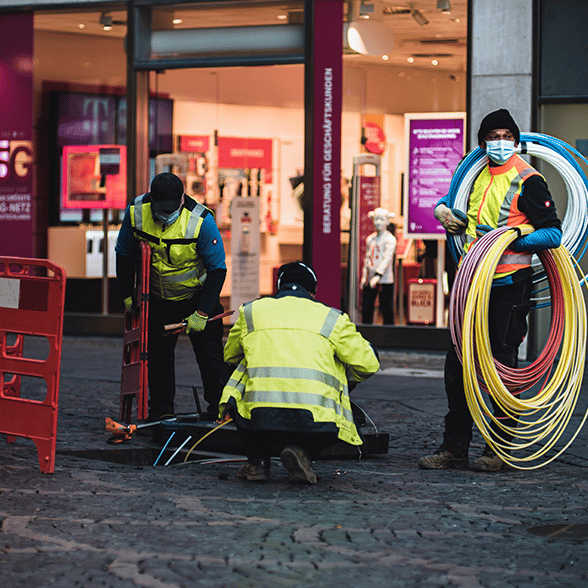With the Trump Administration set to take over on January 20, 2025, the future of the Broadband Equity Access and Deployment (BEAD) Program and how it might change is an issue high in rural broadband providers’ minds.
The incoming administration and Republican majority in Congress have been critical of the management of the $42 billion program signed into law in November 2022 to close the gap in rural broadband coverage. The program has yet to distribute a single dollar. But would attempting changes in the BEAD Program now only delay broadband projects even more?
Congress has heard many complaints about BEAD, said Senate Commerce Committee member Marsha Blackburn (R-TN) during “Broadband in the Trump Administration,” a conference in Washington, D.C. presented by Broadband Breakfast. Broadband providers have told elected officials that the regulatory requirements for participating in the program are “burdensome” and “overreaching.”
“NTIA’s imposition of rate regulation, unionized workforce, DEI labor requirements, climate change assessments, excessive per-location costs — we’re going to bring those issues forward and have a review of that,” Blackburn said during the conference last week.
In addition, she said the committee will look at earlier-adopted broadband grant programs, established both before and after the COVID era, to determine which are duplicative “and see how we can consolidate.”
National Telecommunications and Information Administration (NTIA) Administrator Alan Davidson, who confirmed during the conference that he would step down on January 20, defended both BEAD, which NTIA manages, as well as funding programs led by the Treasury and Agriculture Departments and other agencies.
“We’ve made incredible progress so far. Just at NTIA we have shovels are in the ground on a billion dollars-worth of middle mile efforts [in a program apart from BEAD], building out over 3,000 miles of fiber,” Davidson said. “Thousands and thousands of families have been connected through our Tribal connectivity program, not to mention the many programs being administered by our sister agencies.”
As for BEAD, he described it as “really the cleanup batter of our programs. It’s designed to make sure that every home has a connection, and we are on track and on time delivering BEAD the way that Congress drafted the law,” Davidson said.
Whether or not it is on time as Congress In 2022 intended, the incoming administration and Congress does not believe its progress has been timely. Is there a way to speed up the process?
The program required each state and territory to submit detailed plans on how they would administer funds. That included chapters on items Blackburn mentioned, such as climate requirements and diversity, equity, and inclusion (DEI) concerns, which are causing some providers to balk at BEAD.
More than two years after passage, NTIA has approved all states’ BEAD plans. But the states remain at different points in other BEAD processes and many still might benefit from streamlining.
The conference included a BEAD panel featuring officials from funding programs in Maryland, Michigan, and New York — states that are comparatively far along in the process and expect to begin distributing funds in 2025.
In some states, NTIA’s regulatory requirements were less controversial because there were already similar provisions in state law. “There are a number of things at the state level that are well understood among our providers and have been factored in,” said Joshua Breitbart, senior Vice President, Connectall, Empire State Development, speaking for New York.
But Denise Rinaldo, executive director of the Open RAN Policy Coalition, said it makes sense for a new administration to audit high-priced programs to ensure they are being administered correctly. “I do believe that we need to make sure that we’re all being good stewards of the taxpayer dollar. I think it’s incredible work that we’re doing to build out internet throughout the country and are there things that we can do to take that timeframe and shrink it.”
Last summer, the Biden NTIA began considering BEAD Program changes that could increase interest among broadband providers — considering fixed wireless, satellite and other broadband technologies rather than placing a heavy preference on fiber. All panelists showed interest in adopting that policy.
“There’s no way we can reach fiber to every home. We have pockets in the state right now where it’s not attractive for anyone to run fiber,” said Ronnie Hammond, director of the Maryland Office of Statewide Broadband. Fixed wireless makes sense in remote areas, he said, and Maryland’s interest in potential satellite users includes not just Starlink, but in homegrown companies developing potential low-Earth-orbiting satellite competitors.
Every state has its share of rural or otherwise extremely hard-to-reach spots. “You know, the Adirondack Park is equivalent to the size of Vermont. Once there, it takes a lot of work and effort and coordination to build that framework,” Breitbart said.
“The flexibility to look at emerging technology, I think, is really exciting because it’s going to take a technology mix to get to universal availability. There’s no two ways about it,” said Eric Frederick, chief connectivity officer with the Michigan High-Speed Internet Office. “It’s not about the technology. We can fight about bits and bytes and fiber and satellite … but it’s about people and we want to connect these people as quickly as we possibly can.”
Full coverage on the BEAD Program and any possible changes can be found on the Telecompetitor BEAD webpage.



